GUM RECESSION
Gum recession can become a major oral health issue and, because it happens so slowly, many people miss the signs until it has become a major concern. That is why it is so important to catch gum recession early and put together a treatment plan to address not only the health of the gums and the recession, but also the underlying issues that led to the gums receding in the first place.
SYMPTOMS OF GUM RECESSION
Gum recession is essentially the pulling back of the gums due to different causes. As gum recession can take time, there are certain symptoms that you can look out for to see if your gums may be receding. Some symptoms of gum recession include:
- Swollen Gums
- Red Gums
- Shorter Looking Gums
- Bad Breath
- Longer Looking Teeth
- Loose Teeth
While your dentist will likely notice your gums receding, if you aren’t visiting your dentist every six months for a checkup and cleaning, there is a good chance that gum recession will go unnoticed until it becomes more of an issue. Make sure to both look out for symptoms of gum recession on your own, while also visiting your dentist regularly, so they can check for gum recession as well.
CAUSES OF GUM RECESSION
There may be a few different reasons why your gums are receding, which include:
- Hard Brushing
- Genetics
- Old Age
- Teeth Grinding
- Tobacco Use
- Periodontal Disease
Some of these have pretty simple solutions. For instance, if your gum disease is caused by brushing too hard, you can simply adjust the way you brush. If the recession is caused by tobacco use—while it may be a little more difficult to fix than hard brushing—it can be resolved by quitting smoking or other tobacco use.
Other reasons for recession will require more advanced methods of treatment. One major reason for gum recession that will require the intervention of a dentist to resolve is gum disease. Gum disease (or periodontal disease) involves an infection of the gums due to plaque, tartar and/or debris being trapped below the surface of the gums. This disease can lead to a variety of different oral health issues—one of which is gum recession.
GUM DISEASE STAGES
As gum disease gets worse, so do the symptoms. This includes gum recession. If caught early on, very minimal treatment may be required to alleviate any gum recession (if any treatment at all). As the disease becomes more severe, though, the treatments also become more intensive. Below are three stages of gum disease, and what to expect at these stages:
GINGIVITIS
Gingivitis is the early stage of gum disease and is very easily treated. At this stage, if there is gum recession, it generally isn’t bad enough that any restorative measures are required.
PERIODONTITIS
The next stage of periodontal disease is periodontitis. At this stage, more severe damage has begun to occur, some of which may be untreatable. This may include gum recession. Gum recession treatments will likely need to be considered at this stage.
ADVANCED PERIODONTITIS
Once the gum disease gets bad enough, it can be extremely difficult to treat the damage that has occurred. The gums are likely receded to the point where the teeth are loose, and restoring the gums can be an extremely difficult process. Do not let your gums get to this point!
GUM RECESSION TREATMENT
The most common treatment option for gum recession is a gum grafting procedure. This procedure involves a dentist taking tissue from somewhere else in the mouth and grafting it to the area in which the gums have receded.
While receded gums can never fully heal, a gum graft helps to restore the lost tissue and improve the appearance of the patient’s gums.
PREVENTION
The best way to treat gum recession is to avoid it in the first place. This is done by taking proper care of your teeth and gums through good oral care techniques. Make sure to brush, floss, and rinse every day, twice a day. You’ll also want to make sure to visit your dentist every six months for a checkup and cleaning. The cleanings will help you to avoid gum disease, and the checkups will allow your dentist to diagnose any gum disease that has already occurred.
If you notice your gumline receding, or if you notice any other signs of gum disease, make sure to contact your dentist and set an appointment for them to take a look at the area. The sooner you treat gingivitis, the less likely it is to progress to periodontitis.
If you would like to avoid gum recession, it’s important to stop using tobacco products. This includes smokeless tobacco. You’ll also want to consider adopting a healthy diet and lifestyle. A healthy diet allows for the reduction of sugar, which in turn can prevent buildup that leads to gum recession.
One of the best things you can do to avoid gum recession is to visit your dentist every six months for a cleaning and checkup. Here, they can check for signs of gum recession and the conditions that lead to the recession of gums.
With proper care and regular trips to the dentist, you should be able to avoid gum recession entirely.







